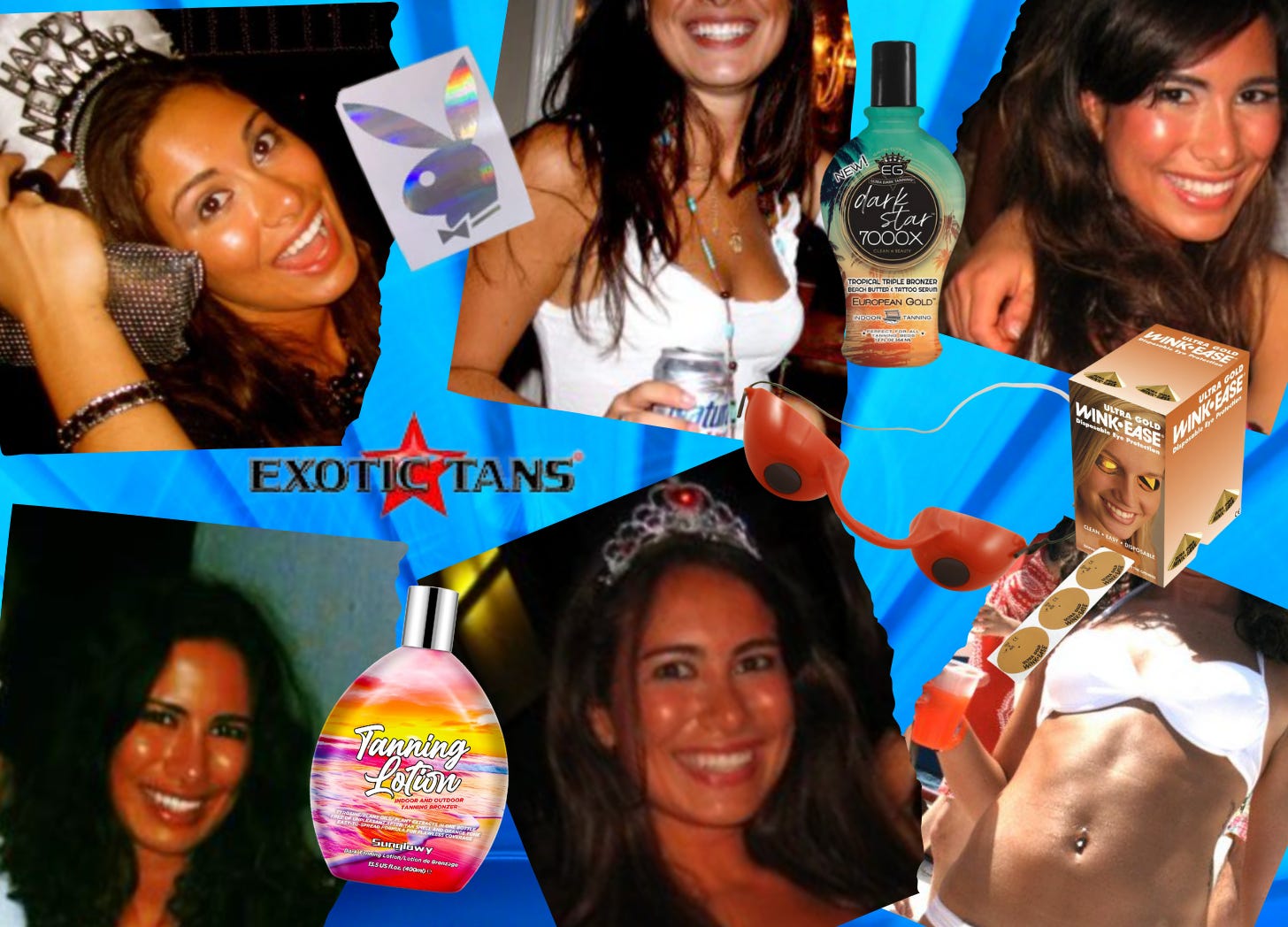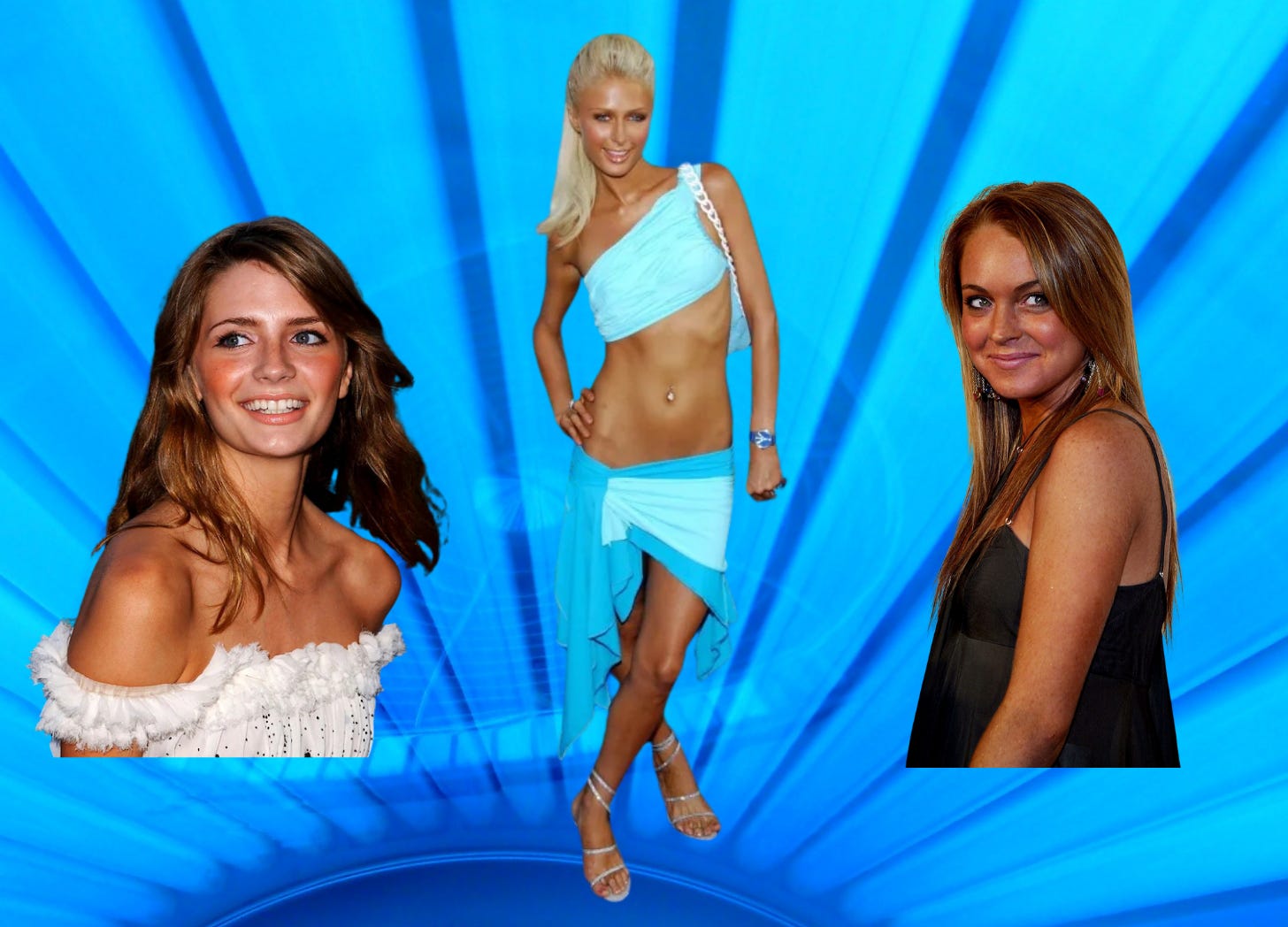How This Former Tan-aholic Found Her Glow—Sans Skin Damage
The hardest breakup I've ever been through was with a tanning bed.
As a teenager growing up in the early 2000s who worshipped the aesthetics of Paris Hilton and Lindsay, the tanning salon was my home away from home.
In high school and college, any sort of event prep—whether it was for prom or the lingerie-themed party I threw when my parents were out of town (sorry, mom.)—involved a week’s worth of fake baking at the alter of Exotic tans. Most of the time, I’d put a sticker on my hip so I could see the transformation of my skin tone from start to finish. It was usually shaped like a Playboy bunny, and extremely visible any time I wore my low-rise Juicy tracksuit… which was basically every day.
At the time, nothing made me feel better about myself than stepping out of the booth with a UV-induced faux glow—which makes sense, considering all of my icons at the time hailed from Laguna Beach and The OC. If the bronzed, bedazzled celebs on the pages of US Weekly were to be believed, being tan was synonymous with being hot, rich, and fabulous.
This was a stark difference from what was deemed beautiful in the decades prior. Instead of looking like you’d spent all night in an underground club, a la the ‘90s “heroin chic” era, the early aughts were all about looking like you’d spent a week away on a yacht. Being tan was a sign that you had the time and money to lounge around in the sun—it made life look like one big vacation, and I wanted in on that.
Even now, if I close my eyes and think hard enough, I can still conjure up the very specific aroma of burnt skin and coconut-scented tanning oil (Banana Boat Dark Bronze, obviously.), and boy does it make me nostalgic for those sweet, sweet doses of vitamin D on even the darkest winter days.
Of course, what none of us realized back then—between slathering on SPF 4 oils and baking under bulbs hotter than the sun itself—was that we were basically slow-roasting our collagen into oblivion. Skin health? Never heard of her. The word “glow” wasn’t about hydration or a lit-from-within radiance; it was about how many shades darker you could get before the weekend and whatever skimpy outfits it had in store. What’s more, self-tanner was still in its orange you glad you didn’t try this era—and that one girl who showed up to winter formal looking like streaky Oompa Loompa was enough to scare me off of it completely.
But eventually, the shine wore off… both literally and figuratively.
When I was 26, I had my first tan-induced reality check in a dermatologist’s office on the Upper East Side: The summers I’d spent slathering on OG orange gelee and winters spent baking under the bulbs had finally caught up with me. I had two concerning moles, and so much hyperpigmentation that I’d need thousands of dollars of lasers to undo the damage. Whats more, my face had aged so much that I felt the need to treat myself to Botox for my 27th birthday—a full decade before I thought I’d ever have to consider it.
This revelation couldn’t have come at a better time, both for me personally and in the context of the cultural conversation. It was 2018, and I had just landed my first real job as a beauty editor—which meant that for the first time, I cared more about preserving my skin than frying it for the sake of a good photo to put on the Internet. Suddenly, I was spending my days interviewing dermatologists who spoke about UVA rays the way my high school health teacher warned us about cigarettes, and writing headlines like “Why Sunscreen Is the Only Anti-Aging Product That Actually Works.”
At the same time, the beauty world was undergoing a full-blown identity crisis of its own. Tanning beds were officially out; sunscreen was in. That was the year Glossier launched Futuredew and the “dewy dumpling” look took over Instagram. Instead of trying to bronze our faces into oblivion, we were patting on hyaluronic acid and chasing the kind of glow that came from dewy skin, not dangerous habits. SPF 50 became the hottest beauty product on the market, and—wild as it sounds now—wearing sunscreen every day became a flex.
Once I understood that a short-term tan wasn’t worth the long-term damage, I knew I had to change my habits—but that didn’t mean I actually wanted to. Because here’s the thing that no one tells you when you finally quit tanning: It feels a whole lot more like a glow down than a glow up. Without the faux color I’d relied on to feel good for so long, I suddenly felt… unfinished. My favorite outfits didn’t hit the same (especially the white ones), my legs felt strangely naked, and every Instagram picture needed a heavy Valencia filter to make me look like myself. Or at the very least, to make me feel alive.
For the first time since I was 15, I had to figure out who I was without my tan. And, honestly? It felt like a full-blown identity crisis.
So instead of giving up entirely on the bronzed goddess look that made me feel my most beautiful, I found new—healthier—ways to up my glow. I swapped tanning beds for treatment rooms and discovered that the real radiance—the expensive-looking, dewy, “she’s got her life together” one—comes from taking care of your skin like it’s your most valuable asset. And also? From really good sunless tanners.
Here’s exactly what’s in my glow arsenal now:
Keep reading with a 7-day free trial
Subscribe to Laugh Lines to keep reading this post and get 7 days of free access to the full post archives.





